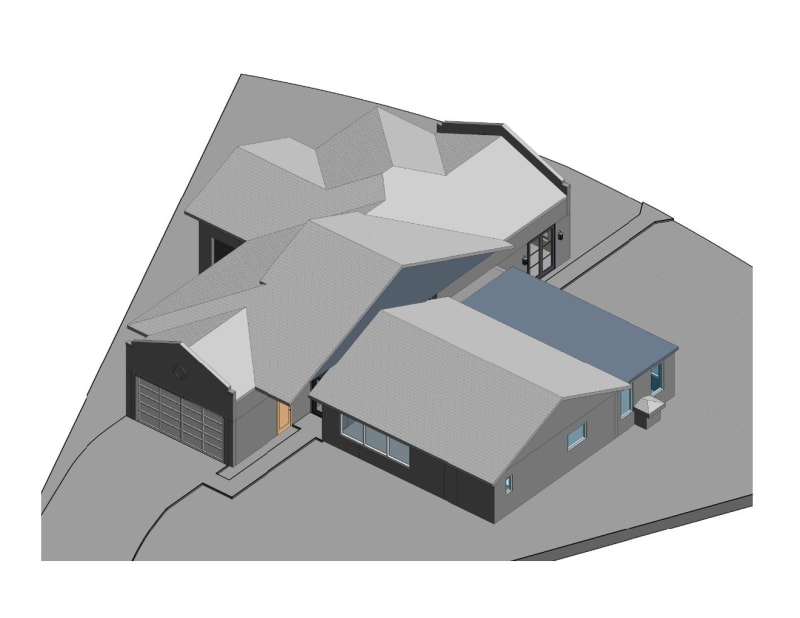Standard American
Structural
I have a residential project where the contractor does not want to use wood trusses because of the long lead time. He is insisting I change my design from wood trusses to conventional wood frame but I just don't see how it will work with the roof geometry. I have made several attempts to try to lay out the framing but just don't see anything that is practical. He is also insisting I keep the member lengths to 16ft too so he can go to local lumber yard and pick up what he needs. I attached an image of what the roof profile looks like. Do you think it would be out of line to go back to the architect and tell them to simplify it because it's not practical to conventionally frame or am I over thinking this? Keep in mind this is the architect's version that they thought they simplified it already. Just a little back story the low roof on the right is existing and they plan to raise it in another phase. Thanks for the comments.



